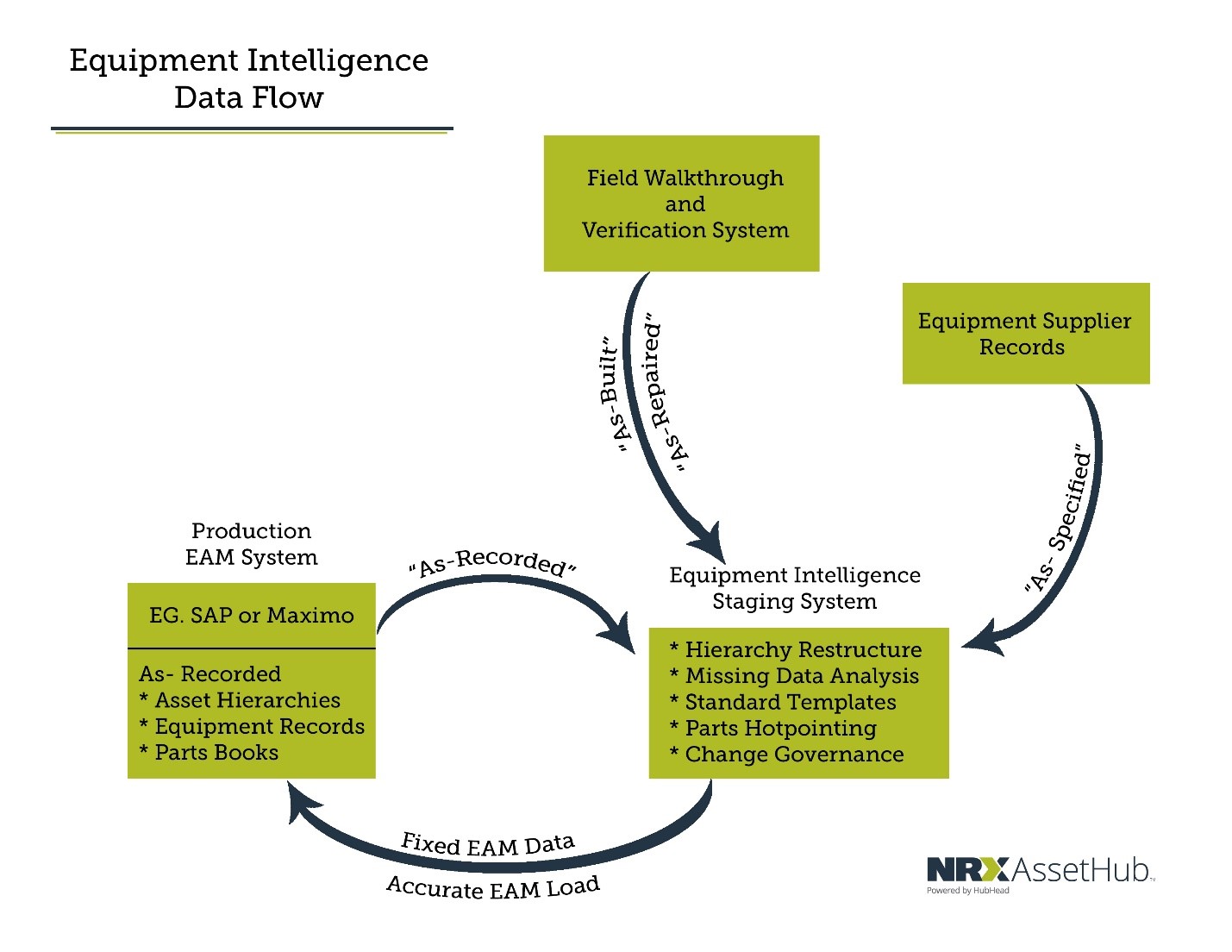Why using an intelligent staging area to fix equipment, asset maintenance and parts book records is always the best, first step for making an EAM useful.

There are many factors which cause the “as-is” or “as-built” state of assets recorded in an Enterprise Asset Management (EAM) system to be incorrect or out of date. Build changes, design modifications, retrofitting equipment, and even maintenance repairs can cause asset records in an EAM to be wrong. Design and re-design changes cause “as-planned,” “as-built,” “as-repaired” and the “as-recorded” versions of equipment and asset to be inconsistently collected and entered into an EAM system.
At HubHead, we understand that the current state of asset data in production EAM applications matters a great deal. Accurate data is important when you are building out “greenfield” records to load into your EAM or when you are re-building and completing “brownfield” plant remediations. It is usually expensive for teams to maintain assets when accurate asset information is missing. We successfully help customers complete projects to verify and get the data right in their important EAM applications.
What is the “as-is” State of Assets?
All assets have a current state. State means the current configuration of equipment in production use. When an asset and equipment build-out happens, it often differs from the original plans. Equipment repairs take place, or brownfield modifications occur to the plant which again causes changes. Frequently the changes do not get reflected in the EAM system of record. Therefore, the “as-recorded” state in an EAM differs significantly from the equipment and assets in use. Getting an accurate record of the “as-is” state of equipment is critical if you want to maintain it properly or to plan and undertake design changes and renovations. Equipment Intelligence lets you fix equipment information efficiently and lets you move forward with new technology and improvements.
Figure 1 illustrates how an Equipment Intelligence staging area helps you efficiently bring together data from various systems to fix the as-recorded information in production EAM systems.
Figure 1: Equipment Intelligence
There are many advantages to using Equipment Intelligence to fix Asset and Equipment records in the System of Record EAM packages. Benefits include:
- Fixed data lets you perform maintenance efficiently and effectively.
- If you are planning equipment upgrades or changes, you will know what assets are actually in the plant.
- Running with accurate and complete asset data improves the overall performance of your EAM system.
- It’s a chance to reconfigure asset hierarchies to what they should be, rather than how someone configured them in your EAM from a data load years ago.
- Making mass data changes in an Equipment Intelligence staging area is easy. You can take advantage of the built-in AI recommendation engine, equipment templates, bulk change, and other advanced data change features.
- Using an intelligent staging system, all changes applied to the production EAM go through a vendor approved API or data loading interface. Also, changes don’t immediately happen to production systems. Changes are only applied once appropriate governance and change management review has taken place by asset owners.
- Data changes don’t need to happen through the inefficient System of Record EAM user interface.
- An Equipment Intelligence staging area provides a logical roll-back point for data if problems occur in production EAM asset records.
Squeeze More Life and Value out of your EAM
NRX AssetHub efficiently fixes data in production EAM systems, and the process extends their useful life and value to your business. If you have bad asset data in your EAM, it’s costing you a lot of money and providing little useful value. An Equipment Intelligence staging area lets you make changes and fix your EAM data with proper governance, and through a vendor approved API.
Automated Equipment Intelligence data changes take much less time, cost less money and doesn’t require extra effort from your maintenance team. They are likely busy enough already trying to keep you key equipment assets up and running. For a typical EAM application, NRX AssetHub software provides a ten times improvement in the number of EAM data fixes in production systems in one month.
The Equipment Intelligence built into NRX AssetHub gives your legacy EAM applications a second life. Using Equipment Intelligence is always the best, first step, to get more out of your EAM. If you’d like to understand more about Equipment Intelligence and what NRX AssetHub does, don’t hesitate to give us a call. We are pleased to share what we know.
Share this article


